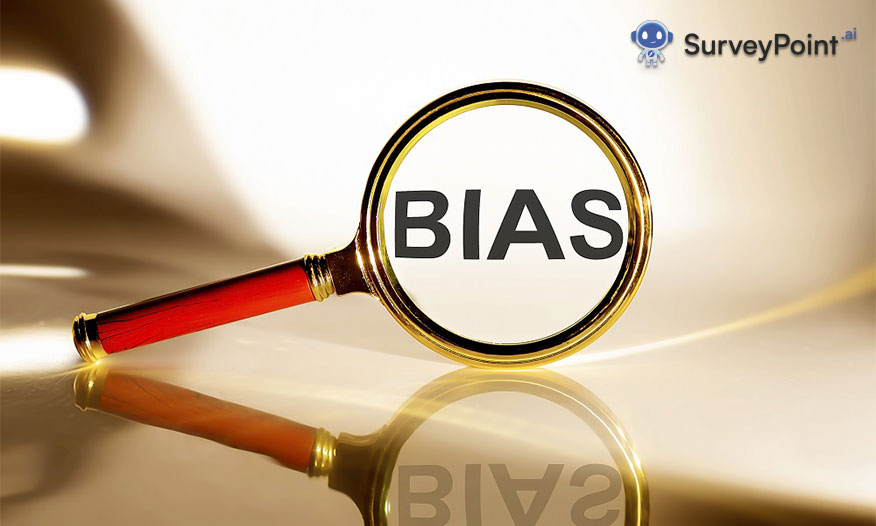
Sample bias And sampling error would be the bad guys in your market research assignment if it were a movie. They can infiltrate your picture-perfect setting and spread confusion and doubt, calling your entire outcome into question. The good news is that there are numerous solutions to these all-too-common issues.
What is Sampling Error?
Sampling error is the proportion of overall error in research attributable to the sampling procedure. Several reasons contribute to a sample not representing its population, including sampling bias. Differentiation between a sample and a population is solely due to the method of selecting certain units.
There are two fundamental reasons for sampling error:
- First, there is a chance that some unusual or variable units exist in a population and are picked randomly, as this has a probability of occurring. Researchers can prevent this mistake by expanding the sample size, which reduces the likelihood of selecting rare or variant units.
- The second cause of sampling mistakes is sampling bias, which is the inclination to pick units with specific features. The most obvious type of sampling bias is known as selection bias, resulting from an improper sampling design. When a subset of possible units is excluded from the sample, this is known as selection bias.
What are Sampling biases?
When data is obtained unfairly, some individuals in the target population will have a lower or greater sampling probability than others. The data collected from the whole population may not accurately reflect the information collected in the systematic study. It often occurs unintentionally and is often missed by the researcher.
As was emphasized, sampling error occurs when an unrepresentative sample is selected. The limited sample size is the only way sampling error can occur, leading to poor accuracy. Nevertheless, sampling bias can be assessed after a study is completed.
Sampling Bias Types
Some of the key sampling bias types are:
- Self-Selection bias: People with particular qualities are more likely than others to consent to participate in research.
- Coverage bias: People who decline to participate or drop out of a study differ systemically from those who participate.
- Undercoverage bias: Some population members are insufficiently represented in the sample.
- Advertising or pre-screening bias: A sample may be biased based on how volunteers are pre-screened or where research is publicized.
How To Prevent Sampling Bias
- Using a well-thought-out study design and method of sampling can assist you in preventing sample bias.
- Define a population of interest and a sampling frame
- Match the sample frame as closely as feasible to the target population to minimize the possibility of sampling bias.
- Make user-friendly questionnaires.
- Follow up with non-respondents.
In contrast, the discrepancy between a survey’s outcome and the population value is known as sampling error. The assessment of sampling error can be anticipated, evaluated, and accounted for in contrast to bias. Sampling error is quantified using P-values, standard errors, confidence intervals, and coefficients of variation. These metrics are employed to compute sample size before sampling and assess our confidence level in the results following analysis.
Choosing the appropriate sampling procedure and sample size helps reduce sampling error. Although sample bias cannot be precisely quantified, sampling error can be precisely estimated. Preventing and reducing sample bias must be a top priority. Sampling error happens when the confidence intervals are too broad because of the limited sample size.
Related: Top Survey Question Types To Win Higher Response Rate
What Are The Most Prevalent Types Of Sampling Errors?
If researchers are not certain who to interview, they make a mistake in defining the population.
- Sampling frame error: Sampling frame mistakes occur when researchers incorrectly target a subpopulation when choosing samples.
- Selection error: A selection error happens when respondents choose to engage in research on their own. Only those who are interested react. By requesting replies from the complete sample, it is possible to minimize selection mistakes. The response rate will be increased by pre-survey planning, follow-ups, and a well-organized survey design. Also, attempt CATI surveys and in-person interviews to increase response rates.
- Sampling mistakes: Sampling errors are caused by a mismatch in the respondents’ representativeness. It typically occurs when the researcher does not thoroughly arrange his sample. To minimize these errors, it is necessary to use a rigorous sample design. This sample size represents the total population, an online sample, or survey respondents.
How To Minimize Sampling Errors?
- Increase sample size: A bigger sample yields more accurate results since the research becomes more representative of the total population.
- Instead of using a random sample, test groups are proportional to their size in the population.
- Know your audience: Examine your population and determine its demographic composition.
Interested in sending your own surveys?
Explore our solutions that help researchers collect accurate insights, boost ROI, and retain respondents using pre-built templates that don’t require coding.




